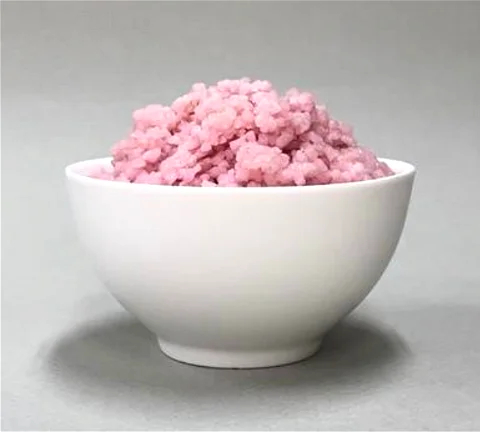If there’s one combo that characterizes Korean Cuisine, it’s Beef and Rice. Now, Korean scientists have found a way to infuse rice with beef to make a single, unified product that could revolutionize Korean beef sustainability…

It’s a special technique that produces a specific product. And Korean researchers see a huge market for it. That’s because Koreans love their beef more than just about any other food. Except, maybe, rice.
In fact Koreans cherish beef so much that they have enshrined one indigenous cattle variety as their national cow. And they love it so much that there is rarely enough of its premium beef to export!
It’s about sustainability
Here’s where the Korean love affair with beef clashes with the new global reality. Climate change researchers have been saying, for the better part of a decade now, that livestock production – particularly beef ranching – is a number one agricultural contributor to greenhouse gas production. And – maybe even more critically – it’s the most wasteful way to create protein for human consumption.
So… Seeing a future where beef might not exist in its present form, Koren scientists have come up with a way to culture beef cells – on rice kernels. Not only is it a highly sustainable way to perpetuate beef in the Korean diet, it’s a convenient way to get your beef and rice together. And that’s a great solution for making Korean dishes such as Dolsot Bimbap (Korean mixed rice), Kimchi-Bokkeumbap (Kimchi with fried rice), and Mandu (Dumplings).
How they did it
We’ve looked at how cultured, or lab-grown meats are grown, from very small samples of real animal cells multiuplied in special ‘fermenters’. The fermenters are realy just environments designed to grow the animal cells into much larger colonies which are copies of the meat of the animals they samples came from.
No ranching, as such, is involved. No feeding with grain and other expensive materials. Minimal water use. No large-scale land use. No manure to dispose of. And no greenhouse gasses produced.
The Korean researchers have found a way to glue animal cell samples to rice grains. The cells grow very well on the rice, ‘infusing’ it with real beef in the process.
A surprising success
According to Nextshark: “The resulting product, which has 8 percent more protein and 7 percent more fat than regular rice, is firmer and brittler. The rice that had higher muscle content smelled like beef and almonds, while rice that had higher fat content smelled like cream, butter and coconut oil.”
Study report First author Sohyeon Park emphasized its potential to revolutionize food production: “Imagine obtaining all the nutrients we need from cell-cultured protein rice. […] Rice already has a high nutrient level, but adding cells from livestock can further boost it.”
The takeaway
“I didn’t expect the cells to grow so well in the rice,” Park said in a news release. “Now I see a world of possibilities for this grain-based hybrid food. It could one day serve as food relief for famine, military ration, or even space food.”
My take
I want to see a whole range of rice-cultured meat products. Chicken, Pork, Lamb, Goat, and even Fish or Seafood!
The beauty of the method perfected by Park and his associates means that we can get a complete dietary protein in one food. Which combines meat and grain. That sounds like a nutritional power combo to me!
Now… Stretch your imagination a bit to envision making fillings for tacos, burritos and dumplings, and fried rice dishes (see photo, top of page) with meat-infused rice! Easy. Quick. And – we hope – cheap…
In a time when we’re looking toward a future diet dominated by veggie proteins, it’s exciting to think that we can preserve traditional meat proteins in a convenient, attractive form.
~ Maggie J.

